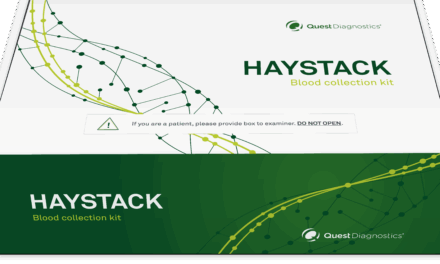New research demonstrates the ultra-sensitive SNV detection capabilities of ppmSeq technology, with error rates reaching as low as 8 x 10-8 for minimal residual disease applications.
Ultima Genomics announced new research published in bioRxiv demonstrating the ultra-sensitive single-nucleotide variant (SNV) detection capabilities of its ppmSeq technology, with error rates reaching as low as 8 x 10-8 for minimal residual disease (MRD) applications.
The study, led by researchers from the Landau Lab at Weill Cornell Medicine and the New York Genome Center, shows that ppmSeq extends circulating tumor DNA detection limits significantly beyond current MRD assays while using a simple whole-genome sequencing workflow requiring 10- to 100-fold less sequencing coverage than other error correction techniques.
“With its unique combination of low-cost and high accuracy, ppmSeq marks a real breakthrough in sequencing technology,” says Dan A Landau, MD, PhD, a member at the New York Genome Center and professor of medicine and professor of physiology and biophysics at Weill Cornell Medicine, in a release. “It opens new horizons in studying the somatic genome as a novel frontier in human genetics, and holds enormous promise for clinical applications, including sensitive detection of cancer residual disease.”
Technology Addresses NGS Error Challenges
Traditional sequencing approaches face limitations in detecting low variant allele frequency variants due to error rates and inability to identify errors from DNA degradation during sample preparation. Current error-correction techniques like duplex sequencing require massive over-sequencing to capture sufficient duplex molecules, making whole-genome duplex sequencing cost-prohibitive.
Building on Ultima’s ultra-low error, flow-based sequencing technology, ppmSeq encodes both strands of DNA molecules in a single sequencing read to enable up to part-per-10 million accuracy (SNVQ70) for SNV calling. The technology provides exceptional assay sensitivity for low frequency alleles while requiring significantly less sequencing depth than other error correction methods.
Clinical Application Testing Results
Researchers tested ppmSeq capabilities in clinical applications by assessing circulating tumor DNA detection for disease monitoring in cancer patients. The study benchmarked ppmSeq assay performance and sensitivity against other technologies.
“As a highly accurate, highly scalable WGS approach, ppmSeq can be a key building block for the next generation of tumor-informed and tumor-naive cancer monitoring applications,” says Adam Widman, MD, a researcher and medical oncologist at Memorial Sloan Kettering Cancer Center and study co-author, in a release.
The researchers conclude that ppmSeq represents a highly accurate and cost-effective option for emerging clinical applications including tumor-informed MRD, tumor-naive MRD, and new whole-genome applications in cancer genomics including somatic mosaicism.
Platform Specifications and Availability
Ultima’s ppmSeq technology provides part-per-million accuracy (SNVQ60) for calling SNV and is designed for the UG 100 sequencing platform. The technology is compatible with the UG 100 Solaris Free workflow, which launched at AGBT 2024 and enabled over 50% increased output to 10-12 billion reads per wafer with pricing reduced 20% to $0.24 per million reads.
“Ultima’s unique sequencing architecture was designed to specifically meet the needs of cost-effective, large-scale applications. It especially excels in applications like liquid biopsy that require extreme accuracy, and we are excited to see further validation of ppmSeq within the academic community,” says Gilad Almogy, CEO and founder of Ultima Genomics, in a release.
Photo caption: Ultima’s ppmSeq technology is designed for the UG 100 sequencing platform (pictured).
Photo credit: Ultima





